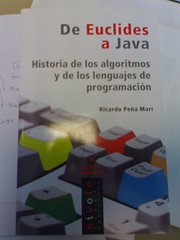Java después de veinte años
 El año pasado Java cumplía 20 años. Por ese motivo se publicaba Java at 20: How it changed programming forever donde se hace un resumen de sus ventajas más notables.
El año pasado Java cumplía 20 años. Por ese motivo se publicaba Java at 20: How it changed programming forever donde se hace un resumen de sus ventajas más notables.
Según el autor, su principal fortaleza consistiría en ser una herramienta para tener el trabajo hecho:
But Java’s core strength was that it was built to be a practical tool for getting work done. It popularized good ideas from earlier languages by repackaging them in a format that was familiar to the average C coder, though (unlike C++ and Objective-C) Java was not a strict superset of C. Indeed it was precisely this willingness to not only add but also remove features that made Java so much simpler and easier to learn than other object-oriented C descendants.
Habla sobre el problema de los ‘applets’ (casi en fase de certificación oficial de su muerte, en estos momentos):
The irony is that applets never worked very well. They were completely isolated from the content on the page, unable to read or write HTML as JavaScript eventually could. Security constraints prevented applets from interacting with the local file system and third-party network servers. These restrictions made applets suitable for little more than simple games and animations.
Por completar, traigo un elogio del Java hecho por un desarrollador de Python que se autocalifica como converso: Why Java? Tales from a Python Convert que destaca la máquina virtual, las bibliotecas, la robustez de los tipos de datos y la concurrencia. También habla de las construcciones más modernas. Nos ha recordado aquella serie de la que hablábamos en Motivos por los que debería gustarnos Java donde se daba un buen repaso a las principales características de Java.